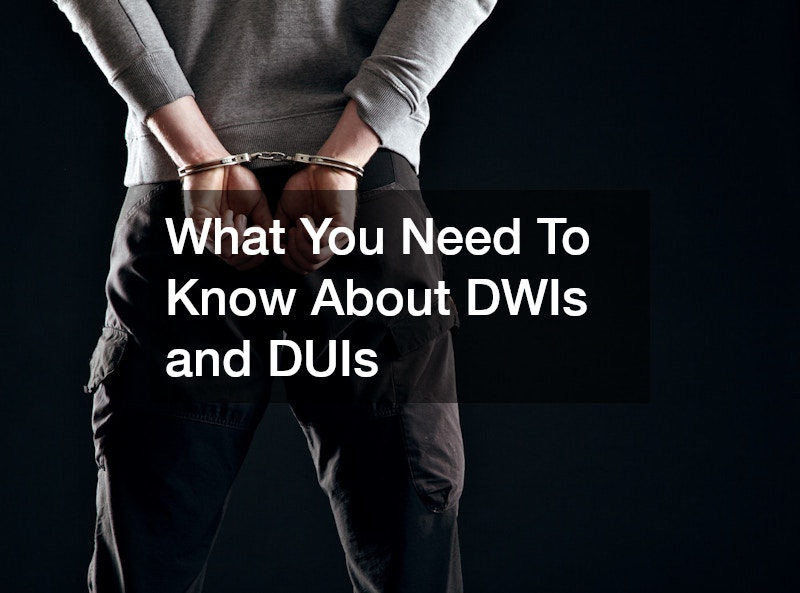
If you’ve been charged with a DWI (driving while intoxicated) offense, you’ll need to work with an attorney. According to Justia, you may face a fine for a suspended license ranging from $500 to $2000. In some states, a DWI charge will result in a license suspension. After the judgment is given, your attorney can help you get your license reinstated.
Each state has different requirements for getting your license back after a DWI, and a team of license reinstatement attorneys can explain those requirements. You may be required to attend a driving class that includes information about driving while intoxicated. Some states require the installation of an interlock device on your ignition. According to Find Law, in some states, a temporary “hardship” license can be issued that will allow you to drive, but only for work purposes.

Although it can feel humiliating to have a court-suspended license, you can choose to see it as an opportunity for a fresh start. You can use the experience as a wake-up call, attend the classes needed, and take the measures required. Be sure to purchase auto insurance and show the court a reinstatement letter that proves you attended the required courses.
DUI and DWI are among the more serious driving infractions that a person can be charged with, for good reason. Drunk driving statistics are bad, which is why programs like a DWI intervention course exist: Not just to divert some of the worst impacts of a DUI or DWI, but to get intoxicated drivers back on a path to a more general sense of wellness and keeping them from driving intoxicated again.
General impairment vs DUI is a common question when drunk driving charges are involved, when many drivers may wonder why so many charges show up on their arraignment for a single offense. Your DUI lawyer can help with navigating the legal landscape of DUI. If you or a loved one shows a DUI sign, please make sure that you do not drive. Sober cabs and sober rides in cities with public transit are common, affordable, and safe alternatives to driving because when it comes to the question, “Is buzzed driving illegal?” the answer is yes. Public intoxication New York law is a serious offense as well and can be punished with fines and jail time, so call a DUI lawyer before you say one more word to the police.

Because traffic laws are determined by states, and not by the federal government, it can be tricky to really understand traffic violations like DWIs and DUIs. On a really fundamental level, you may not even know the difference between the two. (But if you know that the first letter stands for “driving” in both acronyms, you’re off to a solid start.)
So let’s get some things straightened out.
First off, “DUI” stands for “driving under the influence,” and “DWI” stands for “driving while intoxicated.” DUIs tend to be less serious traffic violations, although it depends on the state laws to determine just how big the difference is.
When these charges involve alcohol, the severity of the violation depends on how much alcohol is in the driver’s body. The legal limit in every state is .08% BAC (blood alcohol content), and if a driver tests a BAC level at .08% or higher, he or she will be charged with driving while intoxicated.
Some states have ‘zero tolerance’ laws, meaning that a BAC as low as .02% could result in a charge for driving under the influence. Regardless of what the state’s laws are, it’s likely that a police officer will ask a driver to do some field tests if he/she suspects that the driver has been drinking.
In some cases, it’s possible for drivers to get a DWI charge reduced to a DUI charge if they settle for a plea bargain — but again, this depends a lot on the state, and fighting a traffic ticket that involves drugs and/or alcohol usually requires an experienced DUI defense attorney.
Regardless of the exact charge, a DWI or DUI violation can result in some serious punishments. The severity of punishments usually depend on the surrounding circumstances (if you were cooperative, if your BAC was still close to the legal limit) and whether you’ve been charged with this violation before. Many states will allow DUIs or DWIs to be counted as misdemeanor traffic offenses, as long as the circumstances are ideal (e.g., it’s your first charge). But even minor DUIs can be bumped up to felony traffic violations if serious damages, usually including fatal injuries to others, have occurred as a result.
Ultimately, it’s important to remember that both charges are quite serious. Of course, the best way not to deal with them is not to drive after consuming drugs and/or alcohol, but it’s still possible to get your life back on track if you’ve made one of these mistakes. Get more on this here.
